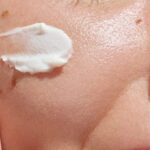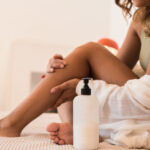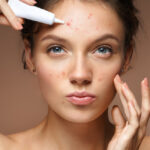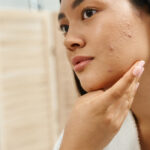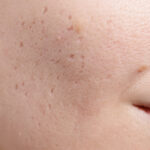Detox Guide
From flushing toxins to cleaning out the skin.
DEEP CLEANSING DETOX FACIAL
For deeply clogged or acneic clients
A CLEAN SLATE
How to clean up your diet and skincare routine for healthy and balanced skin
Deep Cleansing Detox Facial
For deeply clogged or acneic clients
Let’s begin with the very definition of detox: De·tox (verb) to abstain from or rid the body of toxic or unhealthy substances. Clients and potential clients are constantly asking for detox facials and products, but what does that mean exactly for skincare specialists? In addition to the daily exposure to pollutants and UV damage, there are many reasons one would feel the need to detox their skin: after a day at the beach, after a camping trip, or even after a night of heavy makeup use. Situations like these can usually be taken care of at home with a thorough double cleanse and a clay or enzyme mask. But there are situations where someone may need to seek out professional help for more in-depth and frequent services.
Retention Hyperkeratosis or the excess shedding of skin cells that leads to the formation of microcomedones is a main contributor for those inquiring about detox facials. There are a number of products and protocols that can be used in the treatment room to make our client’s skin feel refreshed. In addition to corrective chemical peels, one of the most effective options is an enzyme treatment. Professional enzymes will typically come as a creamy formula that is applied evenly to the face and will need to sit on the skin for up to 15 minutes depending on the brand. Many of them require steam to keep the product moist and to soften the skin and will be removed with a steamed towel wrap. Enzymes provide immediate results by digesting dead skin cells and keratin proteins, softening and loosening lesions.
[ihc-hide-content ihc_mb_type=”show” ihc_mb_who=”2,4,6,7,5″ ihc_mb_template=”3″ ]
Following exfoliation, extractions can be performed. Many clients complain of breakouts, congestion, and excess oil production so performing extractions to clear acne lesions and sebaceous filaments is an excellent way to detox the skin. For noninflamed lesions, it can be helpful to use a comedone extractor. This is a great way to reach those smaller lesions that clients may feel as a bumpy, pebbly texture they can’t seem to get rid of. Just ensure that you have been trained on whatever tool it is you choose as you can cause damage to the skin when using a comedone extractor incorrectly.
If you are not comfortable using a tool or you are extracting inflamed lesions, manual extractions work best. This can be done by wrapping gloved fingers in cotton and applying pressure on the sides around the lesion and using a scooping motion to push the lesion up and out of the pore. Extractions should always be followed with an antibacterial toner and ideally a High Frequency treatment to aid in killing bacteria and promote healing.
If your client does not have a dry skin type you can conclude your service with a clay mask. These come in many forms with ingredients like kaolin, charcoal powder, and bentonite which all help to draw out impurities, absorb excess oil, and soothe the skin. This is something you can retail to your clients to use at home 1-3 times a week. You will also want to get your clients started on a homecare regimen suitable to their skin type and needs. Including either a physical or chemical exfoliant is a great way to keep the skin healthy and “detoxed” in-between services.
To maintain skin after a detoxing facial, you’ll want to make sure clients are using products with the right ingredients at home. Salicylic acid is an excellent ingredient for those with an oily skin type that complain of breakouts and congestion. A beta-hydroxy acid, salicylic acid is oil soluble and can penetrate the pore to help dissolve excess oil and dead skin build-up. For clients that cannot use or handle salicylic acid, l-mandelic acid is another excellent choice. This alpha hydroxy acid has a larger molecular weight than other AHAs meaning it has a slower, more even penetration, resulting in less irritation. l-mandelic acid is exfoliating, anti-bacterial, anti-fungal, and anti-inflammatory so it can handle inflamed acne, non-inflamed acne, and congestion.
For those clients that like to feel the exfoliation, a gentle scrub can be used 1-3 times a week instead of or in addition to their chemical exfoliant if their skin is healthy enough for this (note that scrubs should not be used on inflamed lesions). Our skin’s barrier is there to protect against outside toxins and pollutants so be sure to provide your clients with the supporting products to keep their skin hydrated, moisturized, and protected.
[/ihc-hide-content]





